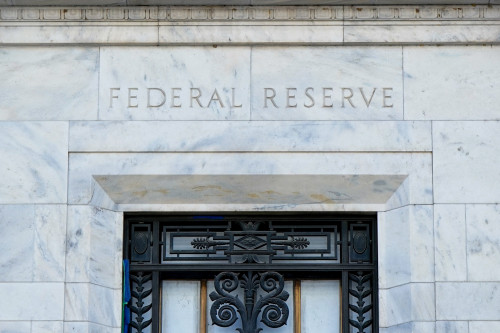
(Justin Vaughn, Editor, Options Trading Report)
A seasoned Wall Street Trader remarked late last Friday as the market closed: “This past week was like a walk in the Park.” The week did come together as many crisis points were reached and addressed. The first stages of the settlement of the China-U.S. proposed trade agreement, the settlement of the U.K.-U.S. tariff arrangements were positive for both sides, relieving many investors concerns. President Trump visited the Middle East, again calming fears and developing many trade deals and fiscal alliances with Saudi Arabia, Qatar, and the United Arab Republic and other smaller countries. The general feelings on Wall Street softened, easing up, as “business got back to usual” with investors and traders focused on their ‘business.’ All indexes for the week were up significantly, with the S&P 500 up 5.3%, and the tech-heavy Nasdaq Composite blazing ahead 7.2%. The Dow Jones Industrial Average showed a 3.4% upside. Both the S&P 500 and Dow Jones are at ‘new’ positive levels for 2025. The University of Michigan sentiment survey out late Friday showed consumer sentiment is at one of the lowest levels in record history, with concerns of inflation and government fiscal policy the most concerning aspect of the survey, conducted by Janet Hus, survey director at U of M.
Monday’s market was focused heavily on the worsening financial condition of the U.S. amid Moody’s downgrading of its Aaa rating to Aa1. Indexes were holding their own as the S&P 500 and Dow Jones were up 0.1% and 0.3% respectively. The tech-heavy Nasdaq finished just above flatline. Heavy deficits with accompanying interest obligations have dragged down ratings, along with weakening of the dollar. Sales of government bonds have increased spurred on by investors looking for safer havens as fears of a weakening U.S. fiscal policy grips the market. A very large tax and spending bill was introduced Sunday by the U.S. House, to be voted on this week. It would add trillions to the already very large deficit of $29 Billion, up from $17 Trillion in 2017 at the beginning of President Trump’s 1st term, according to the Wall Street Journal. “Nearly $1 in every $7 the U.S. spends goes toward paying interest.” As mentioned above, concerns are building as to the direction of present fiscal policy. “It’s a little bit of ‘what me worry,?’ type of market, and that’s exactly when folks like us worry,” said Lisa Shakett, chief investment officer at Morgan Stanley Wealth Management. The 10-year Treasury note closed Monday at 4.43%, up from Friday’s close. Even with high Treasury yields, stocks have defied many analysts’ predictions that stronger bond yields would risk stocks ability to climb higher.
Tuesday the S&P 500 snapped its 6 day upward run. All indexes were flat as investors and traders’ concerns about tariff negotiations and settlements with trading partners again surfaced. All three indexes finished just below flatline, never quite making ‘a statement’ for the day. The bond market was again strong with the 10-year Treasury note climbing a bit to finish at 4.449%. Wednesday’s market took a thrashing, with the Dow Jones Industrial average dropping 800 points, bonds were in demand, as the 10-year Treasury added 11 basis points to finish at 4.59%. Bitcoin sparked up to a new record of $109,000, then rallying Thursday to another new high of $111,986.44. The House OK’d President Trump’s Tax Bill, now heading to the Senate for confirmation. Markets were mixed Thursday, with the Dow Jones and S&P 500 losing slightly, and Nasdaq showing a small gain, pushed by high techs.
China’s struggles continue with a sagging economy and weak Juan. Crumbling real estate values and heavy vacancies (over 30%) have decimated the real estate markets. Since the takeover of Hong Kong over 20 years ago, China has lost nearly every major financial institution, and most of the industrial companies. Strict political policies and near impossible ‘state’ rules have driven most notable companies out of Hong Kong. The once banking capital of the far east is now a secondary market. The effects on mainland China were massive, with most manufacturing facilities exciting and those still remaining functioning at minimal capacity. A major amount of the manufacturing losses have moved to India, Viet Nam and Mexico.
RUMBLINGS ON THE STREET
Barry Stolor, a dealer of Toyota and Lexus Automobiles on Long Island, commenting about the need to repeal the California Mandate, WSJ – “If the factory doesn’t subsidize it and the government doesn’t subsidize it the consumer can’t afford it. The customers just aren’t there.”
Kevin Gordon, senior investment strategist at Charles Schwab, WSJ – “The market has no idea what to focus on, and it keeps having to shift. Tariffs will probably still be number one on that list.”
Christopher Sullivan, Chief investment officer for the United Nations Federal Credit Union, WSJ – “If we’re putting up deficits of this type now, what might it be like when the economy does run into any form of trouble.”





